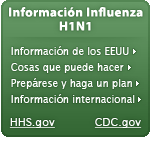National Guideline Clearinghouse | Evaluation and management of small-bowel obstruction: an Eastern Association for the Surgery of Trauma practice management guideline.
August 5, 2013
Guideline Title
Evaluation and management of small-bowel obstruction: an Eastern Association for the Surgery of Trauma practice management guideline.
Bibliographic Source(s)
| Maung AA, Johnson DC, Piper GL, Barbosa RR, Rowell SE, Bokhari F, Collins JN, Gordon JR, Ra JH, Kerwin AJ, Eastern Association for the Surgery of Trauma. Evaluation and management of small-bowel obstruction: an Eastern Association for the Surgery of Trauma practice management guideline. J Trauma Acute Care Surg. 2012 Nov;73(5 Suppl 4):S362-9. [160 references] PubMed |
Guideline Status
This is the current release of the guideline.
This guideline updates a previous version: EAST Practice Parameter Workgroup for Management of Small Bowel Obstruction. Practice management guidelines for small bowel obstruction. Chicago (IL): Eastern Association for the Surgery of Trauma (EAST); 2007. 42 p. [80 references]
Evaluation and management of small-... [J Trauma Acute Care Surg. 2012] - PubMed - NCBI
This guideline updates a previous version: EAST Practice Parameter Workgroup for Management of Small Bowel Obstruction. Practice management guidelines for small bowel obstruction. Chicago (IL): Eastern Association for the Surgery of Trauma (EAST); 2007. 42 p. [80 references]
Evaluation and management of small-... [J Trauma Acute Care Surg. 2012] - PubMed - NCBI
J Trauma Acute Care Surg. 2012 Nov;73(5 Suppl 4):S362-9. doi: 10.1097/TA.0b013e31827019de.
Evaluation and management of small-bowel obstruction: an Eastern Association for the Surgery of Trauma practice management guideline.
Maung AA, Johnson DC, Piper GL, Barbosa RR, Rowell SE, Bokhari F, Collins JN, Gordon JR, Ra JH, Kerwin AJ; Eastern Association for the Surgery of Trauma.
Source
Department of Surgery, Section of Trauma, Surgical Critical Care, and Surgical Emergencies, Yale University School of Medicine, New Haven, Connecticut 06520, USA. adrian.maung@yale.eduAbstract
BACKGROUND:
Small-bowel obstruction (SBO) represents as many as 16% of surgical admissions and more than 300,000 operations annually in the United States. The optimal strategies for the diagnosis and management of SBO continue to evolve secondary to advances in imaging techniques, critical care, and surgical techniques. This updated systematic literature review was developed by the Eastern Association for the Surgery of Trauma to provide up-to-date evidence-based recommendations for SBO.METHODS:
A search of the National Library of Medicine MEDLINE database was performed using PubMed interface for articles published from 2007 to 2011.RESULTS:
The search identified 53 new articles that were then combined with the 131 studies previously reviewed by the 2007 guidelines. The updated guidelines were then presented at the 2012 annual EAST meeting.CONCLUSION:
Level I evidence now exists to recommend the use of computed tomographic scan, especially multidetector computed tomography with multiplanar reconstructions, in the evaluation of patients with SBO because it can provide incremental clinically relevant information over plains films that may lead to changes in management. Patients with evidence of generalized peritonitis, other evidence of clinical deterioration, such as fever, leukocytosis, tachycardia, metabolic acidosis, and continuous pain, or patients with evidence of ischemia on imaging should undergo timely exploration. The remainder of patients can safely undergo initial nonoperative management for both partial and complete SBO. Water-soluble contrast studies should be considered in patients who do not clinically resolve after 48 to 72 hours for both diagnostic and potential therapeutic purposes. Laparoscopic treatment of SBO has been demonstrated to be a viable alternative to laparotomy in selected cases.- PMID:
- 23114494
- [PubMed - indexed for MEDLINE]
- Evaluation and management of small-... [J Trauma Acute Care Surg. 2012] - PubMed - NCBI






















.png)











No hay comentarios:
Publicar un comentario